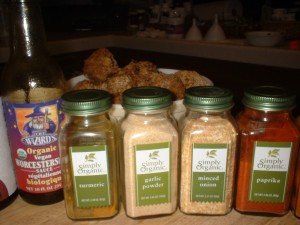 Australian Scientists Breed Non-GM Durum Wheat In Salty Soil
Australian Scientists Breed Non-GM Durum Wheat In Salty Soil
Leading the world from Down Under, scientists at the University of Adelaide’s Waite Research Institute in New South Wales responded to the encroaching salinity caused by climate change and now affecting more than 20 percent of agricultural lands, by developing a variety of durum wheat that not only thrives in salty soil, but produces 25 percent more grain than its parent plant.
Even more remarkably, the Aussie scientists achieved this through a crop breeding process that harnesses the natural salinity toleranc e of ancestral wild wheat plants—thereby rendering some of the increasingly controversial transgenic or genetic modification (GM) techniques used in agriculture today, unnecessary and possibly obsolete.
e of ancestral wild wheat plants—thereby rendering some of the increasingly controversial transgenic or genetic modification (GM) techniques used in agriculture today, unnecessary and possibly obsolete.
Since durum wheat crops are used throughout the world to make pasta, its adaptation to a strain that thrives in salty soil cannot be overestimated in view of a growing global population, dwindling supplies of clean drinking water and erosion of agricultural lands caused by more frequent drought cycles. In addition to representing a remarkable scientific breakthrough, it is hoped that this salt-tolerant plant will enable the United States and Australia—the world’s two biggest producers and exporters of wheat—to continue feeding the global population, even as food supplies become increasingly affected by climate change.
DER
Spices Reduce Toxic Effects Of Fatty Foods
While most of us are familiar by now with the concept of ‘antioxidants’ and are able to identify dozens of foods known to have that cell-protective, anti-cancer property, the results of a recently completed research study about antioxidant spices by Penn State University’s Department of Nutritional Sciences, revealed some surprising additional health benefits.
The bloodstream of research subjects who consumed meals flavored with such spices as turmeric, paprika, rosemary, ginger, cayenne, cumin and  coriander, showed a drop of about one third in the level of triglycerides (one of the two ‘bad cholesterol’ components noted on lipid panels) even when the meals had a high fat content. What’s more, the blood tests also showed a 20 percent drop in insulin levels after richly spiced meals. The results surprised even researcher Sheila West, who did not expect such a large decrease in triglycerides and insulin—the substances associated with two of the biggest public health threats in the U.S., respectively: heart disease and diabetes.
coriander, showed a drop of about one third in the level of triglycerides (one of the two ‘bad cholesterol’ components noted on lipid panels) even when the meals had a high fat content. What’s more, the blood tests also showed a 20 percent drop in insulin levels after richly spiced meals. The results surprised even researcher Sheila West, who did not expect such a large decrease in triglycerides and insulin—the substances associated with two of the biggest public health threats in the U.S., respectively: heart disease and diabetes.
Dr. Ravi Dave, a cardiologist at the University of California, Los Angeles (UCLA), who reviewed and found West’s spice study exciting and encouraging, points to the ancient Indian Ayurvedic medicine’s use of spices as healing agents—which he also recommends for home cooking. Dr. Dave is hoping that further research will prove that eating richly spiced foods can have long-term and lasting therapeutic effects.
Personally, I find it gratifying that my spice-happy cooking style is not merely a gustatory pleasure for my family and friends, but a secret infusion of healthy sustenance as well.
DER


